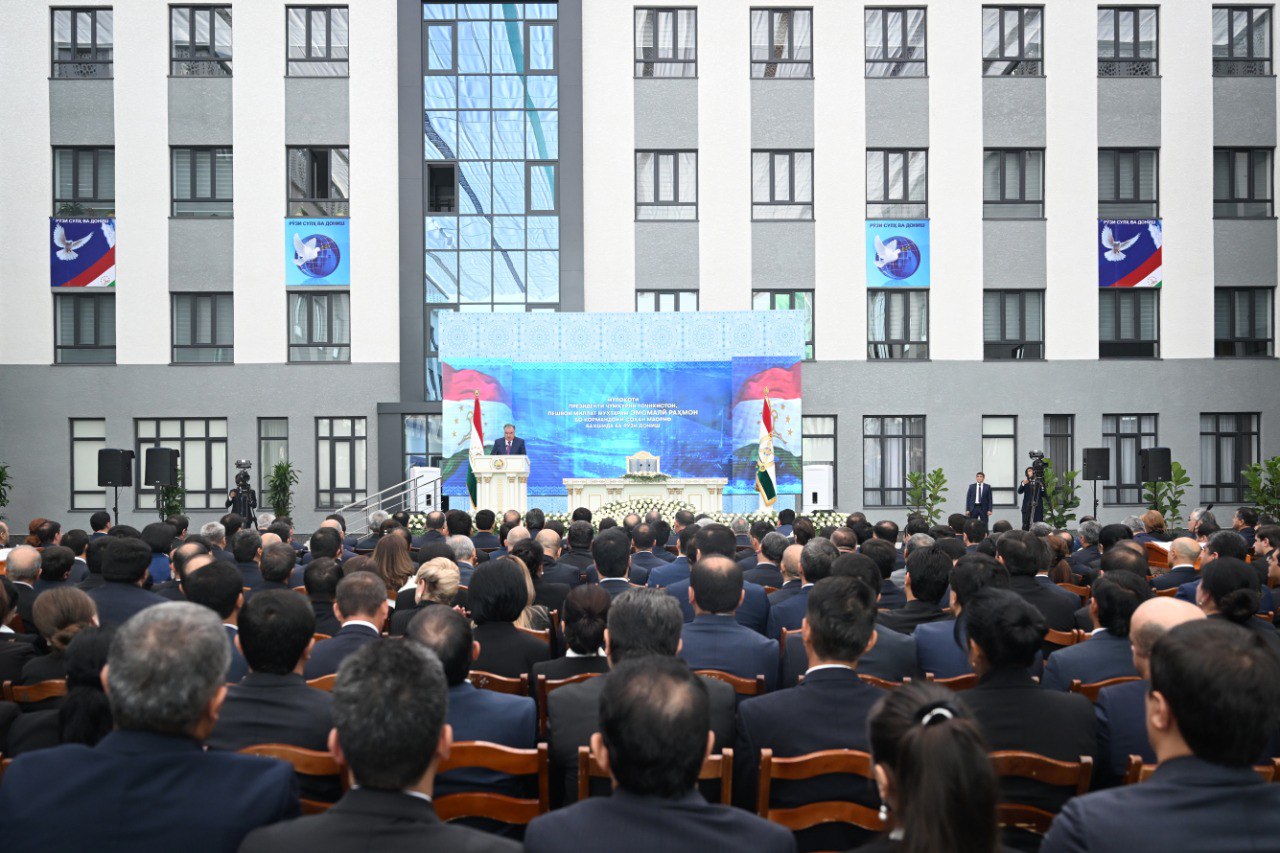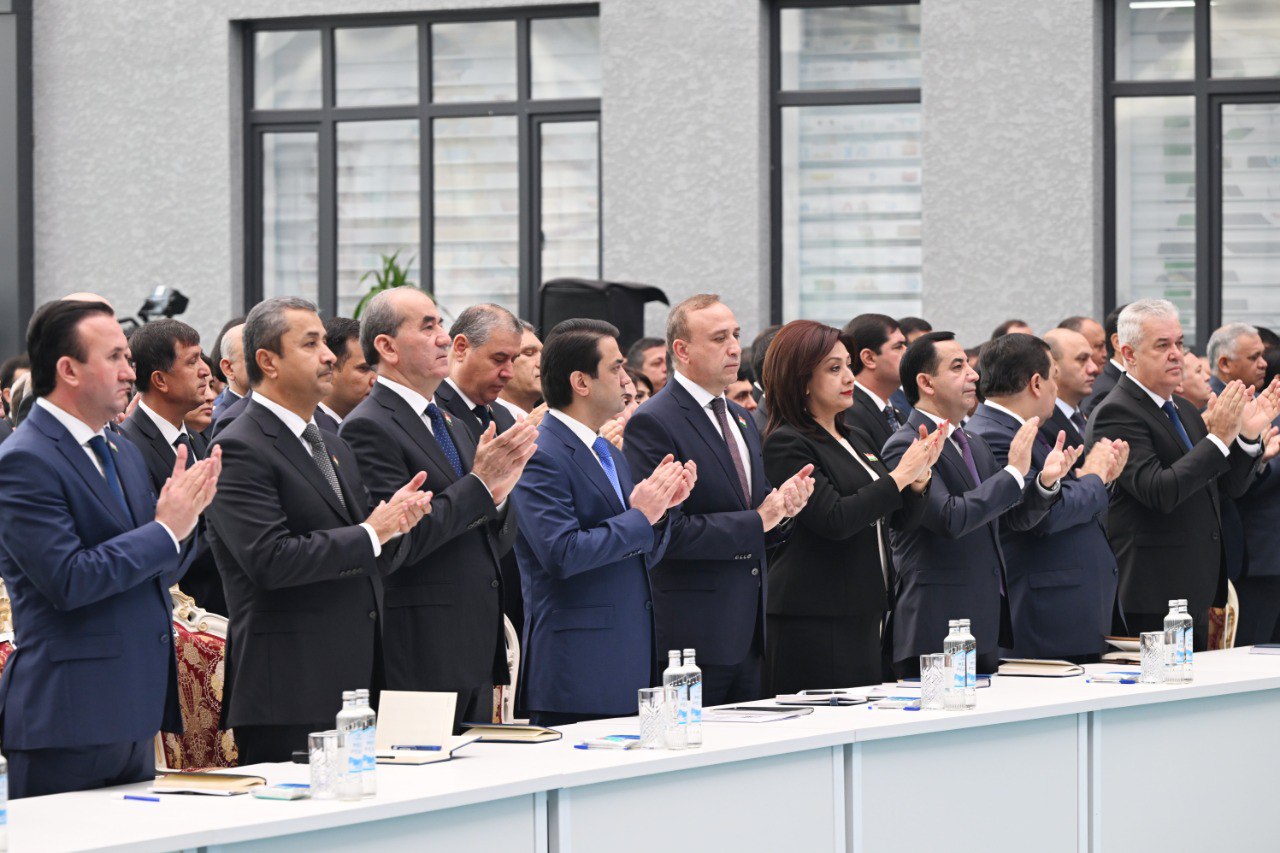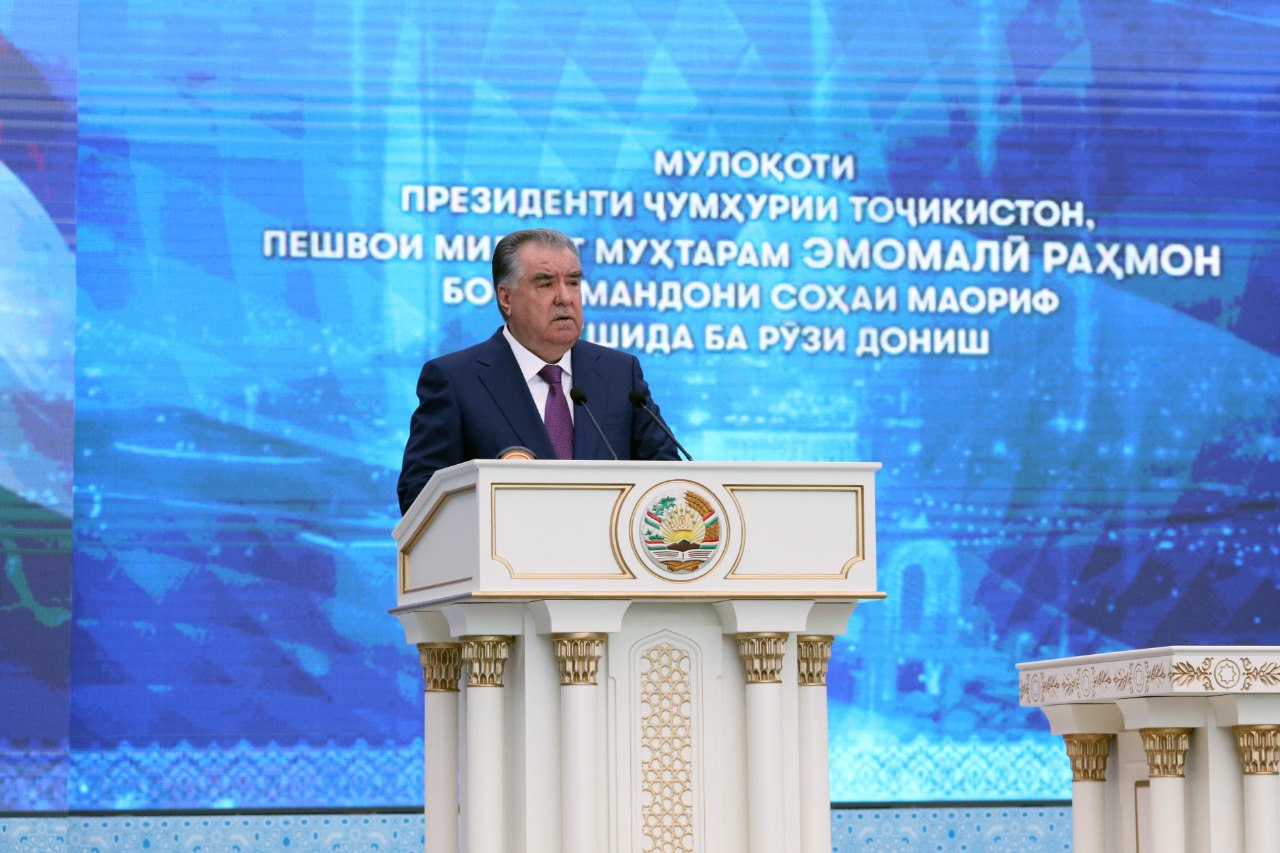Another children's TV channel will be created in Tajikistan to teach the younger generation foreign languages. This instruction was given to the relevant departments by the President Emomali Rahmon, speaking to education workers on September 1.
On the Day of Knowledge, the President spoke at the new school building No. 19 in Dushanbe, which he had previously opened. The four-storey school consists of 75 classrooms, it is designed for 3,500 students and has the best conditions for their education, the press service of the head of state reports.
In his speech, Emomali Rahmon noted the need to teach children science, crafts, morality, languages, use modern technology and technologies, comprehensively prepare them for independent life.
About schools
The President said that today 2.28 million students study in more than 4 thousand educational institutions of the country. There are 163 new type institutions in the republic, including 79 gymnasiums and 84 lyceums. This year, 103 thousand people graduated from the 11th grade, and 250 thousand were accepted into the first grade.
In 2017-2023, modern schools for 72 thousand students were built and commissioned in Dushanbe. This year, modern educational institutions for more than 12 thousand children will be built in the capital. In addition, 24 more new educational institutions for 47 thousand students are currently being built in Dushanbe.
“These figures should serve as an example for the heads of regions and other cities and districts, who should study them, organize work in this direction as seriously as in the capital of the country,” - Rahmon stressed.
This year, the construction and reconstruction of 370 buildings of educational institutions for more than 150 thousand students is underway.
“However, taking into account the rapid population growth, the work done so far is still unsatisfactory, we need to further expand work in this direction,” - the president said.
In addition, 314 buildings of educational institutions are in an emergency condition, 378 are in need of major repairs, and in 50 schools students are trained in three shifts.
“We have to build an average of more than 380 schools every year,” - Rahmon said.
He instructed the relevant authorities to take urgent measures to intensify the construction of new educational institutions.

About kindergartens
The number of preschool institutions in Tajikistan this year has reached 720, they cover more than 105 thousand children. Of this number, 169 institutions for 33 thousand children are located only in the city of Dushanbe. 55 more preschool institutions for 11.5 thousand children are under construction in the capital.
“But this is still a very small amount, since the coverage of children in kindergartens nationwide is only 22%,” - the president said.
According to the program for the development of preschool education in Tajikistan for 2020-2025, more than 100 preschool institutions should be built and put into operation in the country every year. In addition, as part of a public-private partnership, 264 private kindergartens are planned to be created in the country by 2027.
“However, to date, 82 pre-school institutions have been built out of 68 cities and districts in just 34 cities and districts. The main reason for this situation is the lack of adequate funding for the program. It is necessary to ensure the implementation of the plan by attracting the capabilities of the local budget, entrepreneurs and generous people, activists and the population,” - the head of state added.
The President instructed to intensify the construction of kindergartens, recalling that one of the goals of the National Strategy for the Development of Education of the Republic of Tajikistan until 2030 is to achieve 50% coverage of preschool education.

About digitalization of education
To improve the quality of education, on March 20, 2024, a program for the introduction of information and communication technologies in general education institutions of the Republic of Tajikistan for 2024-2028 was adopted. Also, in 2022, the Concept of transition to Digital Education in Tajikistan for the period up to 2042 was approved.
“In recent years, certain works have been done to digitalize the industry, but they do not meet the requirements. That is, today the country's education and science sector lags behind the level of development of global digitalization,” - the president said.
He instructed the Ministry of Education and Science and local authorities to ensure the introduction of digital technologies, the development of modern educational programs, and to increase the level of competence of teachers in the field of modern technologies.
About compulsory secondary education
According to statistics, out of 170 thousand students who graduated from the 9th grade in 2023, 114 thousand continued their studies in the 10th grade, 12 thousand entered vocational lyceums and colleges, and the remaining 44 thousand did not continue their studies in any educational and professional institution.
“It follows from the analysis that the reason for the reluctance of young people to continue their education, on the one hand, is the interference of parents in the future fate of children, especially girls, on the other – the lack of explanatory work on the issue of conscious choice of profession. In this regard, it was instructed to make changes and additions to legislative acts and further strictly control the process of continuing education at the secondary school level.
Now, all graduates of the basic secondary education level after graduating from the 9th grade are obliged, in case of refusal to voluntarily continue their studies at the general secondary education level, to continue their education in institutions of primary or secondary vocational education, that is, in professional technical lyceums and colleges, to get a profession. After graduating from the 9th grade, you definitely need to study!” - said Rahmon, urging parents “not to distance children from science and education”.
About the shortage of textbooks and laboratories
The shortage of textbooks is another alarming problem of the industry and one of the reasons why students do not assimilate curricula at the proper level and reduce the quality of education, the president drew attention.
“Over the past three years, specialists and experts have conducted a scientific examination of 203 textbook titles, especially in the subjects of literature, history and law, revealing facts in them that do not correspond to the norms and values of the Constitution and scientific worldview. However, according to the data, of the 203 titles of the checked books, 82 have not been corrected or republished until today,” - Rahmon expressed concern.
He ordered the Ministry of Education and Science to provide educational institutions with textbooks in full, auxiliary educational literature, scientific manuals, instructions and methodological manuals for each academic subject for two years and to submit a report to the head of state on the completion of the task.
The President also drew attention to the lack of subject rooms and equipped laboratories in many schools. Despite the adoption of the state program for providing educational institutions with laboratories, their material and technical base does not meet the criteria of state certification and accreditation.

“If in Dushanbe this indicator was 96.3%, then in Sughd region it was only 73%, in Khatlon – 48%, in cities and districts of republican subordination – 29%, and in Gorno-Badakhshan Autonomous Region – 7%, which causes extreme concern,” - Rahmon complained.
He instructed the Government of the country to eliminate these shortcomings within the next two years – before the celebration of the 35th anniversary of Tajikistan.
About vocational training for young people
According to official statistics, currently in Tajikistan, the number of young people aged 18 to 30 who do not have a profession, craft or specialty is more than 570 thousand people.
“The first priority for all of us and for you, especially for the Committee on Primary and Secondary Vocational Education and the Ministry of Labor, Migration and Employment, is to train and attract them to the labor market and involve them in economic development,” - Rahmon said.
Currently, there are 65 institutions of primary vocational education in the country, they train specialists in 14 areas and 135 specialties and cover more than 18 thousand students for various sectors of the country's economy.
Also, 46 thousand people are trained in 78 types of professions and crafts in 39 adult vocational training centers under the Ministry of Labor, Migration and Employment. But this is not enough, since hundreds of thousands of people can study in these institutions, the president added.
About universities and raising the status of a teacher
Currently, there are 47 universities in Tajikistan, 214 thousand students study there, whereas in 1991 there were only 13 universities in the country, where 69 thousand young people studied.
The country has a joint Russian-Tajik (Slavic) university and branches of five foreign universities with a total number of 10.5 thousand students.
“In addition, more than 41 thousand of our talented young people are studying science and knowledge in more than 40 countries around the world. There are more than 20 thousand Tajik students studying in Russia alone, and more than five thousand in China,” - Rahmon added.
The President noted that today more than 130 thousand future teachers are studying in Tajikistan, of which more than 71% are women. There are dozens of educational institutions in the country, and about 500 candidates and doctors of pedagogical sciences work in the educational field.
“Thanks to the selfless work of the teacher, generations are growing up that further improve the state and the nation, as well as improve the standard and quality of life of the population,” - Rahmon said.
In conclusion, he instructed the relevant structures to develop a draft law “On the status of a teacher” within six months and submit it to the Government of the country for consideration.








Migrants badly beaten by police in Moscow cafe as crackdown on Central Asians intensifies
Former mayor of Konibodom gets a jail term of 12 years for bribery and fraud
"Immortal Regiment" march not planned in Dushanbe, says representative of the Dushanbe City Hall
GPW 1941-1945 veterans in Central Asia: How many remain and what benefits they will receive
ADB ready to allocate up to US$10 billion for the ASEAN transnational power grid
Roghun hydropower plant to be more powerful than previously planned
Firefighter dismissed due to excess weight appeals to president — Summoned by Dushanbe Police Directorate
How Tajikistan can become a global AI hub and break stereotypes about its technological future
Up to half a billion dollars: What did Tajikistan and Iran agree on at the Intergovernmental Commission meeting in Shiraz?
Iran ready to meet Tajikistan’s industrial needs, says Iranian minister of industry, mine and trade
All news
Авторизуйтесь, пожалуйста